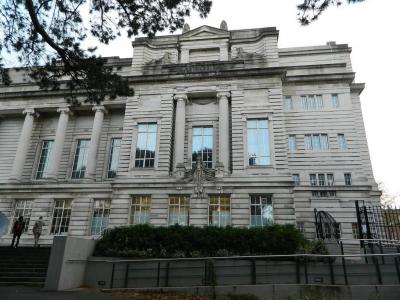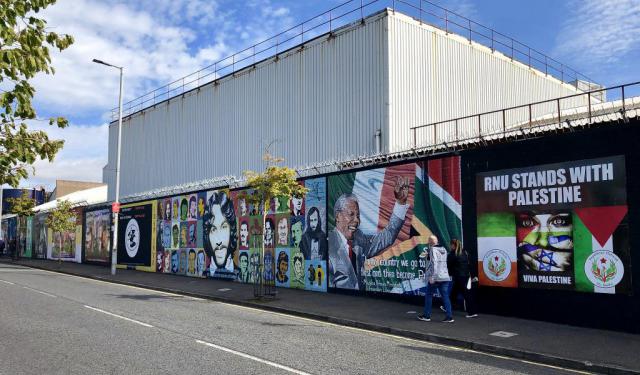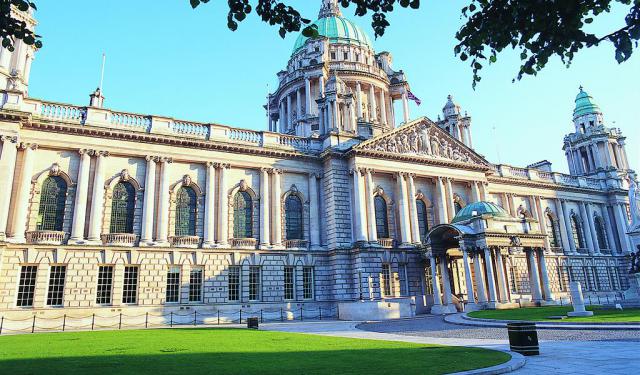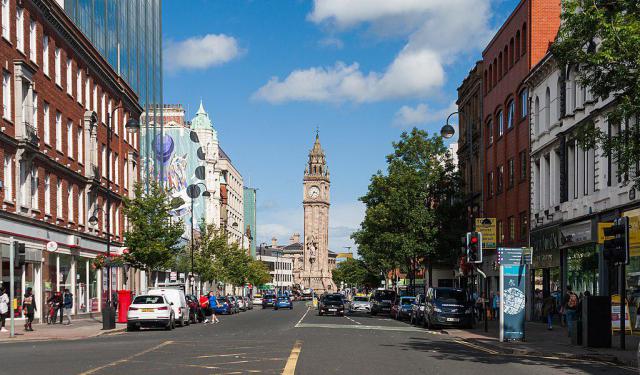Ulster Museum, Belfast (must see)
The Ulster Museum, nestled within Belfast’s charming Botanic Gardens, is Northern Ireland’s largest museum and a national cultural landmark. Founded in 1821 as the Belfast Natural History Society and opened to the public in 1833, it moved to its current spot along Stranmillis Road in 1929. A striking Brutalist extension in the 1960s expanded its exhibition space, though a major renovation brought the museum into the 21st century when it reopened in October 2009. Today, its light-filled atrium showcases a seamless blend of old and new architecture.
Inside, visitors are treated to a sweeping journey through natural history, art, and heritage. The museum boasts an extensive collection of Irish fauna, minerals, rocks, and fossils-and hosts Ireland’s only known dinosaur fossil bones. You’ll discover ancient treasures like the Malone and Moss-side hoards-stone tools and Bronze Age gold artifacts-alongside global ethnographic pieces and even a mummified Egyptian body. For art lovers, permanent galleries feature modern and contemporary works, including pieces by Francis Bacon and local Ulster voices, while the fashion and textile collection spans gorgeous couture from Chanel to Alexander McQueen.
The museum’s “Troubles and Beyond” gallery offers a powerful reflection on Northern Ireland’s recent past, examining the decades of conflict and resilience through compelling personal narratives, memorabilia, and visual storytelling. Interactive spaces like the Discovery Zone make it an engaging visit for families, and rotating exhibitions-everything from wildlife art to contemporary photography-ensure there's always something new to explore.
Best of all? Entry is completely free. Pop next door to the Tropical Hothouse in Botanic Gardens, enjoy coffee in the museum café, and perhaps stroll through Queen’s University grounds afterward.
Inside, visitors are treated to a sweeping journey through natural history, art, and heritage. The museum boasts an extensive collection of Irish fauna, minerals, rocks, and fossils-and hosts Ireland’s only known dinosaur fossil bones. You’ll discover ancient treasures like the Malone and Moss-side hoards-stone tools and Bronze Age gold artifacts-alongside global ethnographic pieces and even a mummified Egyptian body. For art lovers, permanent galleries feature modern and contemporary works, including pieces by Francis Bacon and local Ulster voices, while the fashion and textile collection spans gorgeous couture from Chanel to Alexander McQueen.
The museum’s “Troubles and Beyond” gallery offers a powerful reflection on Northern Ireland’s recent past, examining the decades of conflict and resilience through compelling personal narratives, memorabilia, and visual storytelling. Interactive spaces like the Discovery Zone make it an engaging visit for families, and rotating exhibitions-everything from wildlife art to contemporary photography-ensure there's always something new to explore.
Best of all? Entry is completely free. Pop next door to the Tropical Hothouse in Botanic Gardens, enjoy coffee in the museum café, and perhaps stroll through Queen’s University grounds afterward.
Want to visit this sight? Check out these Self-Guided Walking Tours in Belfast. Alternatively, you can download the mobile app "GPSmyCity: Walks in 1K+ Cities" from Apple App Store or Google Play Store. The app turns your mobile device to a personal tour guide and it works offline, so no data plan is needed when traveling abroad.
Ulster Museum on Map
Sight Name: Ulster Museum
Sight Location: Belfast, Ireland (See walking tours in Belfast)
Sight Type: Museum/Gallery
Sight Location: Belfast, Ireland (See walking tours in Belfast)
Sight Type: Museum/Gallery
Walking Tours in Belfast, Ireland
Create Your Own Walk in Belfast
Creating your own self-guided walk in Belfast is easy and fun. Choose the city attractions that you want to see and a walk route map will be created just for you. You can even set your hotel as the start point of the walk.
The Troubles and Peace Process Landmarks
Decades past the official end of The Troubles in Belfast, the price of peace in Northern Ireland remains high. One of the means with which to secure it, back in 1969, was erecting a wall to physically separate the capital's warring Protestant and Catholic communities. Known since as the Peace Wall, the structure has become a popular tourist attraction for the multiple murals painted thereon... view more
Tour Duration: 1 Hour(s)
Travel Distance: 2.1 Km or 1.3 Miles
Tour Duration: 1 Hour(s)
Travel Distance: 2.1 Km or 1.3 Miles
Belfast Victorian Architecture Jewels
Described as “modestly scaled, undemonstrative, somewhat solid in aspect, and usually restrained (sometimes even austere) in its use of external decoration”, the urban landscape of Belfast has been influenced by the demands of shipbuilding and linen industry, much as transitioning between culture, arts, commerce, and education. Still, the architectural spectrum of the city is quite broad and... view more
Tour Duration: 2 Hour(s)
Travel Distance: 2.9 Km or 1.8 Miles
Tour Duration: 2 Hour(s)
Travel Distance: 2.9 Km or 1.8 Miles
Belfast Introduction Walking Tour
For over a century, the political situation of Belfast, the capital of Northern Ireland, has been the source of strife, first between the Crown-loyal Protestants and Irish Catholics, and more recently between the United Kingdom and the European Union.
Sitting on the banks of the River Lagan where it meets the Irish Sea, the city owes its name to this coastal condition, with "Belfast"... view more
Tour Duration: 2 Hour(s)
Travel Distance: 3.8 Km or 2.4 Miles
Sitting on the banks of the River Lagan where it meets the Irish Sea, the city owes its name to this coastal condition, with "Belfast"... view more
Tour Duration: 2 Hour(s)
Travel Distance: 3.8 Km or 2.4 Miles






